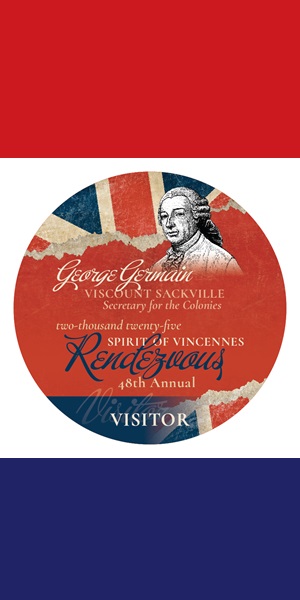At a time when public educational institutions, social service providers, and state and local governments are struggling to emerge from Illinois’ multi-year budget impasse, 51 percent of registered voters say the solution to the state’s $1.5 billion budget deficit is to cut “waste and inefficiency in government.”
Meanwhile, 10 percent of those responding to a statewide poll about the state’s budget by Southern Illinois University Carbondale’s Paul Simon Public Policy Institute, believe the solution is more revenue while another 28 percent say the problem requires a combination of revenues and cuts.
Institute hosts discussion tonight in Student Center Auditorium
Institute staff John T. Shaw, director; John Jackson, visiting professor; and Linda Baker, university professor, will discuss these and other recent poll findings at 6 p.m, in the Student Center Auditorium.
The discussion will also examine poll results on the 2018 statewide political campaigns and recent social issues. Admission is free and the public is invited. There will also be an audience Q-and-A session.
Voters unable to agree where to cut the budget
Results from The Simon Poll® show that while voters consistently believe cutting waste and inefficiency in state government could solve the budget crisis, voters have also been unable to agree on where to cut. When offered a choice of major budget categories from which to cut spending:
- 29 percent chose higher education
- 17 percent chose health and human services
- 6 percent chose K-12 education.
The largest response category, however, was a volunteered “none of the above,” at 32 percent.
“This year, as in years past, our poll shows the people of Illinois support spending cuts in the abstract, but are reluctant to endorse specific spending cuts. This underscores one of the essential reasons for our state’s seemingly intractable budget problems. The people of Illinois seem to be saying, ‘Please cut spending, but we have no idea of where to actually cut spending – and stay clear of the programs that we like,’” Shaw said.
‘Millionaire’s tax,’ graduated income tax and legalized gambling favored
There are some areas in which a majority of voters support increasing revenue, starting with 76 percent favoring the so-called “millionaire’s tax,” which would impose an extra 3 percent levy on income over $1 million.
Nearly as many, 72 percent, favor a constitutional amendment to allow a graduated income tax, with higher rates for higher earners and lower rates for lower earners.
By a slight margin, 49 percent to 46 percent, respondents favored legalized gambling in Illinois to raise state revenues.
Less popular proposals favored were taxes on gasoline to fund highway, road and bridge improvements (42 percent) and a sales tax on services (39 percent).
Taxing retirement income is ‘widely unpopular’
A recurring idea is for the state to tax retirement income, such as pensions and social security. This idea is widely unpopular, with 74 percent opposing and only 22 percent in favor.
However, in a follow-up question in which only retirement income above $100,000 would be taxed, majorities are in favor.
Combining the 22 percent who favored it in the first question with the 52 percent of the 745 initial opponents who would favor it with the exemption, 60 percent of the total sample favor taxing retirement income above $100,000.
Voters still believe waste can be cut
The institute has been asking the “cuts-versus-income-versus-both” budget question since 2009.
From 2011 to 2015, the percentage of voters believing that cuts were the answer to the problem dropped more than 15 percentage points, from 58 percent to 42 percent. That number jumped to 51 percent favoring cuts in the latest poll.
“This is a perplexing phenomenon in Illinois public opinion,” said Charlie Leonard, an Institute visiting professor and one of the directors of the poll. “After more than a decade of cuts to public budgets, people can’t let go of the idea that there is $1.5 billion in waste to cut.
“We have written about this extensively before, but the persistent belief in cutting ‘waste,’ coupled with the inability to agree on solutions, means we’ll probably still be writing about it in the future.”
(See Simon Review paper: “The Climate of Opinion in Illinois 2008 – 2016: Roots of Gridlock” https://opensiuc.lib.siu.edu/ppi_papers/47/)
Sample size and margin of error
The margin of error for the entire sample of 1,001 voters is plus or minus 3.1 percentage points. This means that if we conducted the survey 100 times, in 95 of those instances, the population proportion would be within plus or minus the reported margin of error for each subsample.
For subsamples, the margin of error increases as the sample size goes down. The margin of error was not adjusted for design effects. Among self-identified primary election voters, the margin is plus or minus 6 percentage points in the 259-voter sample of Republicans, and 4.5 percentage points in the sample of 472 Democrats.
Polling methodology
Live telephone interviews were conducted by Customer Research International of San Marcos, Texas using the random digit dialing method. The telephone sample was provided to Customer Research International by Scientific Telephone Samples.
Potential interviewees were screened based on whether they were registered voters and with quotas based on area code and sex (< 60 percent female). The sample obtained 51 percent male and 49 percent female respondents.
Interviewers asked to speak to the youngest registered voter at home at the time of the call. Cellphone interviews accounted for 60 percent of the sample. A Spanish language version of the questionnaire and a Spanish-speaking interviewer were made available.
Fieldwork was from Feb. 19 through Feb. 25. No auto-dial or “robo” polling is included. Customer Research International reports no Illinois political clients. The survey was paid for with non-tax dollars from the institute’s endowment fund.
The data was not weighted in any way. Crosstabs for the referenced questionswill be on the institute’s polling website, simonpoll.org.
Polling data available for use by scholars and the public
The institute is a member of the American Association for Public Opinion Research’s (AAPOR) Transparency Initiative. AAPOR works to encourage objective survey standards for practice and disclosure. Membership in the Transparency Initiative reflects a pledge to practice transparency in reporting survey-based findings.
The Institute’s polling data are also archived by four academic institutions for use by scholars and the public. The four open source data repositories are:
- The Roper Center for Public Opinion Research
- The University of Michigan’s Inter-university Consortium for Political and Social Research
- The University of North Carolina’s Odum Institute Dataverse Network
- The Simon Institute Collection at OpenSIUC.
Note: The “Simon Poll” and the “Southern Illinois Poll” are the copyrighted trademarks of the Board of Trustees of Southern Illinois University. Use and publication of these polls is encouraged – but only with credit to the Paul Simon Public Policy Institute at SIU Carbondale.














